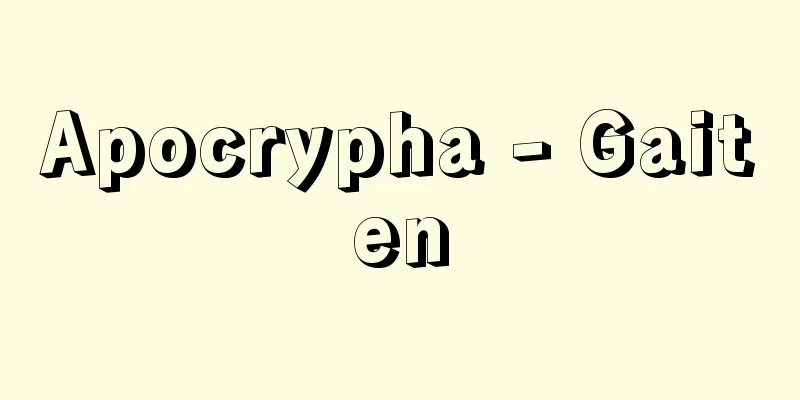Posted price - Harigaminedan

|
The Edo Shogunate's official rice price. It was so named because it was posted in the form of a hosho (letter of thanks) in the Naka-no-kuchi (middle entrance) of Edo Castle in New Year, April, and September. It was used as the conversion rate for the salaries of hatamoto and gokenin (vassal vassals), but it differed from the actual price of rice. In some regions, it was also used as the conversion price for kokudai-inou (annual tax payment) with a certain increase added. Source : Heibonsha Encyclopedia About MyPedia Information |
|
江戸幕府の公定米価。正月,4月,9月に江戸城内の中ノ口(なかのくち)に奉書の形で張紙されたのでこの称がある。旗本・御家人の俸禄の換算率となるが,実際の米価とは違っていた。一部の地方では年貢石代納(こくだいのう)の換算値段としても一定の増値段を加えて用いられた。
出典 株式会社平凡社百科事典マイペディアについて 情報 |
Recommend
Field magnet coil
A winding that carries an excitation current in an...
Conrad, Johannes
[Born] 1839 [Died] 1915 A German economist of the ...
Rialto
…This symbolic square, praised by Napoleon as “th...
Offerings - Kugonin
These people belonged to the Imperial Court and p...
Kazawa [Hot Spring] - Kazawa
A hot spring at the northern foot of Mt. Yunomaru ...
Areios - Areios
Please see the Arius page. Source: Encyclopaedia ...
Retrograde Canon - Gyakkou Canon (English spelling)
A musical term. A type of canon. Also called a cra...
Weakened memory - Kimeigenjaku
…Events that evoke strong emotions are strongly i...
Larnite (English spelling)
A representative type of dicalcium silicate minera...
cross-vine
...Many species have beautiful flowers and are cu...
Nymphalidae
…A general term for insects in the Nymphalidae fa...
Bandai Kinori - Bandai Kinori
An arborescent lichen of the Usneaceae family that...
Accidental Butterfly - Guusancho
It refers to butterflies that do not natively inh...
Yuzuriha - Yuzuriha
An evergreen tall tree of the family Pycnonotacea...
Stephan, Horst
Born: September 27, 1873, Saida [Died] January 9, ...







![Buzen [city] - Buzen](/upload/images/67ccb5525d94d.webp)

